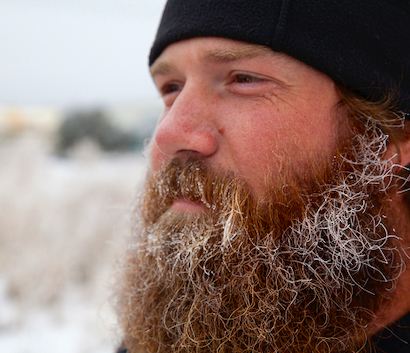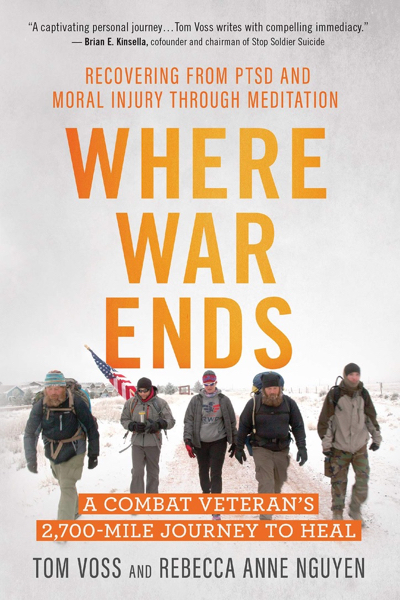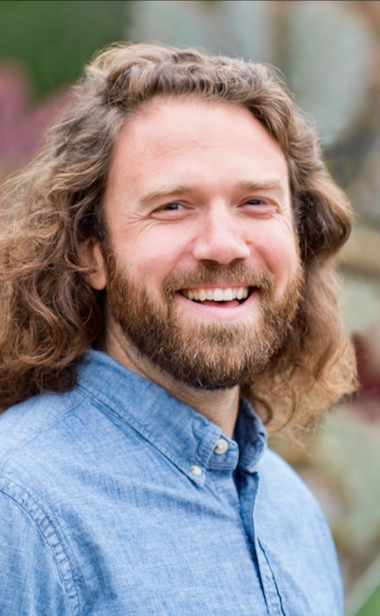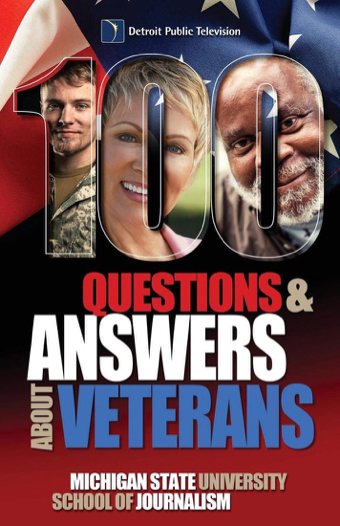.
By DAVID CRUMM
Editor of ReadTheSpirit magazine
This book could save a life.
That’s the opening line we published, not long ago, in our ReadTheSpirit cover story recommending Capt. Dan Willis’s book Bulletproof Spirit, which was written by a police veteran to help protect and heal both mind and spirit for first responders—many of whom die by suicide each year. Now, we can’t think of a better way to explain the importance of Tom Voss’s Where War Ends: Recovering from PTSD and Moral Injury through Meditation. Both books are published by our friends at New World Library.
In fact: Both books could save a life. Compared with Willis’s book for first-responders, there are two distinct differences in Tom Voss’s book, which focuses on the struggle toward recovery and healing for traumatized veterans of military service.
The first distinction is that Tom’s story is a suspenseful page-turner, the real-life story of Tom’s desperate decision to walk across 2,700 miles of American back roads with a fellow veteran in the hope of finding solace. In fact, you might have seen Tom’s story in the feature-length documentary, Almost Sunrise, which currently is streaming for free on Amazon Prime. Now, Tom’s new book tells the dramatic story behind that documentary in which Tom is shown on his often painful journey, but says relatively little on camera about his intense internal struggle. Now, in this book, the whole soul-searching story opens up for us. He was helped in writing this account by his sister, the veteran travel writer, journalist and storyteller Rebecca Anne Nguyen.
The second distinction is that Tom focuses on an issue that can also affect first-responders such as police officers, but is more common among returning veterans of military conflict: “moral injury.” That crisis faced by countless veterans is named on the book’s cover in Tom’s sub-title—then, throughout the book, he hammers away at the importance of honestly confronting this painful issue. One of the final passages in his book addresses at-risk veterans directly:
“If you take one thing away from my story, I hope it’s this: Even when you feel consumed by moral injury and alone in the world, you are not separate from the beauty and good that exist here. You are still a part of that. You are connected to that, whether you feel it right now or not. You can experience that beauty and goodness again, if you want to. If you cry out for help and relief, help and relief will come.”
These are heart-felt words from Tom, who set out on the long road across America because he was feeling a pull toward suicide himself. Now, Tom’s vocation—the passion that drives him each day to travel and talk and teach—is to reduce the rate of suicide among U.S. veterans.
An average of 20 veterans die of suicide each day. In his new book, Tom is inviting all of us to work on reducing that tragic toll.
WHAT IS MORAL INJURY?

Snow and ice clung to Tom’s beard during one especially harsh portion of his long walk across America.
In our interview about his book, Tom Voss explained why confronting “moral injury” among veterans has become an essential part of his life’s work.
“It’s been troubling veterans and people who have witnessed and participated in war for a long long time—but we didn’t have language for it,” Tom said in our interview. “When I finally found out about the concept of moral injury, it clicked immediately. It means that there’s more going on than a symptom cluster, which is how Post Traumatic Stress usually is described. A lot of men and women are being treated for and medicated for PTSD when they really are struggling with the trauma of moral injury. That’s a huge part of the healing process—being able to name what you’re feeling and why you’re feeling it so intensely.”
Research into this concept among veterans emerged in the 1990s, which means this is still a relatively new branch of psychological, social, cultural and spiritual studies. Until the debut of Tom’s new book, one book that was frequently recommended by scholars for general readers is Soul Repair: Recovering from Moral Injury after War by Rita Nakashima Brock and Rebecca Ann Parker, published in 2013 by Beacon Press. One research center that Tom recommends on his personal website, The Meditating Vet, is the Syracuse University Moral Injury Project.
The Syracuse team defines the issue this way (a definition that Tom uses in his own talks, trainings and other educational work):
Moral injury is the damage done to one’s conscience or moral compass when that person perpetrates, witnesses or fails to prevent acts that transgress one’s own moral beliefs, values or ethical codes of conduct. Within the context of military service, particularly regarding the experience of war, “moral injury” refers to the lasting emotional, psychological, social, behavioral and spiritual impacts of actions that violate a service member’s core moral values and behavioral expectations of self or others (Litz et al., 2009). … While the concept itself is not new—throughout history philosophers, poets and warriors themselves have long wrestled with the ethical dilemmas inherent in war—the term “moral injury” is more recent, and is thought to have originated in the writings of Vietnam War veteran and peace activist Camillo “Mac” Bica (Brock & Lettini, 2012; Bica, 1999, 2014), and Jonathan Shay (Achilles in Vietnam: Combat Trauma and the Undoing of Character, 1994) as the aftermath of war-zone trauma.
Cutting through the citations in the opening pages of his new book, Tom describes moral injury this way:
A soldier may experience moral injury when reflecting on his or her actions during combat. But they can also experience moral injury by bearing witness to the actions of others. The cool indifference of a commanding officer as he stands over a dying civilian; the capture and torture of men who are known to be innocent; the bomb that was planted purposefully to destroy human life: all can call into question our deeply held cultural belief that all people, deep down, are innately good. Bearing witness to the moral indifference of others, or the premeditation of violence, is enough to warp your understanding of morality and make you question the moral character of everyone you meet. This makes it hard for veterans to trust other people and to assume the best in others and in themselves. In addition to participating in and witnessing violence, there’s a third, lesser-known cause of moral injury that impacts soldiers returning from war. It’s the sense of confusion, powerlessness and betrayal that soldiers feel when they come home and try to transition back to civilian life. Some people call them heroes, but most veterans don’t feel like heroes, so there’s a disconnect between the actual experience of war and the perceived experience of it.
An Opportunity to Reach Out
Many readers of our ReadTheSpirit online magazine are clergy, community leaders and teachers looking for resources to share with their communities. Clearly, Tom Voss is addressing an important emerging issue with a wide array of compelling media—from the original documentary to this new in-depth book to his own availability as a teacher and speaker.
Currently, there are more than 18 million American veterans, which means there are families of veterans in most congregations, schools and community groups. This is a terrific opportunity to reach out on behalf of veterans’ needs in your community.
MEDITATION—A RESILIENT ALTERNATIVE
“Right now, what I’m doing is traveling wherever I can to help people with educational talks and workshops,” Tom said in our interview. “I’m sharing my own experience of what finally worked to help with the healing from moral injury. You can see a little of that story in the film, then more time passed and there’s much more of that story in this book. One example of something that’s not in the film is the story of how I ended up becoming a yoga and meditation teacher myself.
“Among the other experiences I’ve had, now—I have completed the 200-hour teacher training with VETOGA, which specializes in bringing yoga, meditation and healing training to veterans and their families. I’ve found VETOGA so helpful that, now, I travel and teach and recommend the VETOGA training to others.”
In fact, Tom wears a VETOGA-logo T-shirt in the photo he chose for the biographical section of his own website, www.TheMeditatingVet.com.
“Now, I realize that this whole 155-day walk we made was an effort to get outside of my comfort zone, to step outside my everyday world, which is also what we do in meditation. That’s a pretty crucial part of the healing process,” Tom said. “When we set out on this long walk, what I noticed was how thin I had spread myself within my daily world of family, friends, work and social life. I had no space left, no time left, to make room to focus on my own healing. So the trekking came about because I needed to find the time and space away.”
In the documentary film, Tom ends with a couple of initial experiences of meditation and spirituality. “But I went so much farther in my spiritual journey after the filming ended. I went to India. I had been pretty focused on my critical thinking, so I had a lot to learn about my own spirituality.
“I was raised Catholic and I have a background in a Catholic understanding of spirituality, which helped. Without that, I don’t think I would have become a seeker, trying to figure out what is real and what resonates with me and how can I connect with nature. That does connect with my Catholic background. It’s really important to understand that there’s a cycle that can happens with our spirituality and our connection with God. That’s an important part of my story and the story of other veterans. When I was in combat, I literally kept asking myself moral questions—spiritual questions—like when I saw terrible things happening: How can a just God let this happen? How can God let human beings treat each other this way? Those questions were the start of a long journey for me.”
Now, in Tom’s book, he takes us along the road he walked with his friend for more than five months—the fascinating story we see in the film—then he takes us on a much longer journey that includes his trip to India and other destinations for training and teaching.
MEETING THE VETERANS IN OUR MIDST
We share Tom Voss’s core value: All of us have a responsibility to shine an honest and compassionate light on the lives of American veterans.
Our own publishing house offers two important books that help readers understand much more about the lives of men and women who serve our country. In fact, at Tom’s request, we have provided him with some sample copies to distribute of 100 Questions and Answers about Veterans, which was produced with the active participation of veterans by the Michigan State University School of Journalism Bias Busters team.
We also recently published The Black Knight, the memoir of retired Col. Clifford Worthy—the oldest living African-American graduate of West Point.
Want to help out? March 1-7 is Invest in Veterans Week. Please, read our Front Edge Publishing column this week by Susan Stitt about the Veterans and Black Knight books.
Throughout his new book, Tom often speaks directly to veterans about the need to realize that they must initiate and pursue the hard work of recovering from their trauma. “Even people who love you the most can’t do the work for you. Eventually, you have to do the work—that’s certainly what I’ve found,” Tom said in our interview.
However, he also stresses his hope that all Americans will begin to learn more about veterans’ lives—because we have a moral obligation after having sent these young men and women into harm’s way.
In the book, he puts it this way:
The responsibility to acknowledge, accept and heal from moral injury doesn’t just belong to those suffering from moral injury. When we send our youth into battle on our behalf, we are complicit in their actions. We are responsible for bearing our portion of the pain those actions cause. And in taking responsibility, we are empowered to help these women and men rebuild their moral scaffolding, reclaim their place in the society they volunteered to protect, and remember what it means to be human—and to belong.
.
.
.




